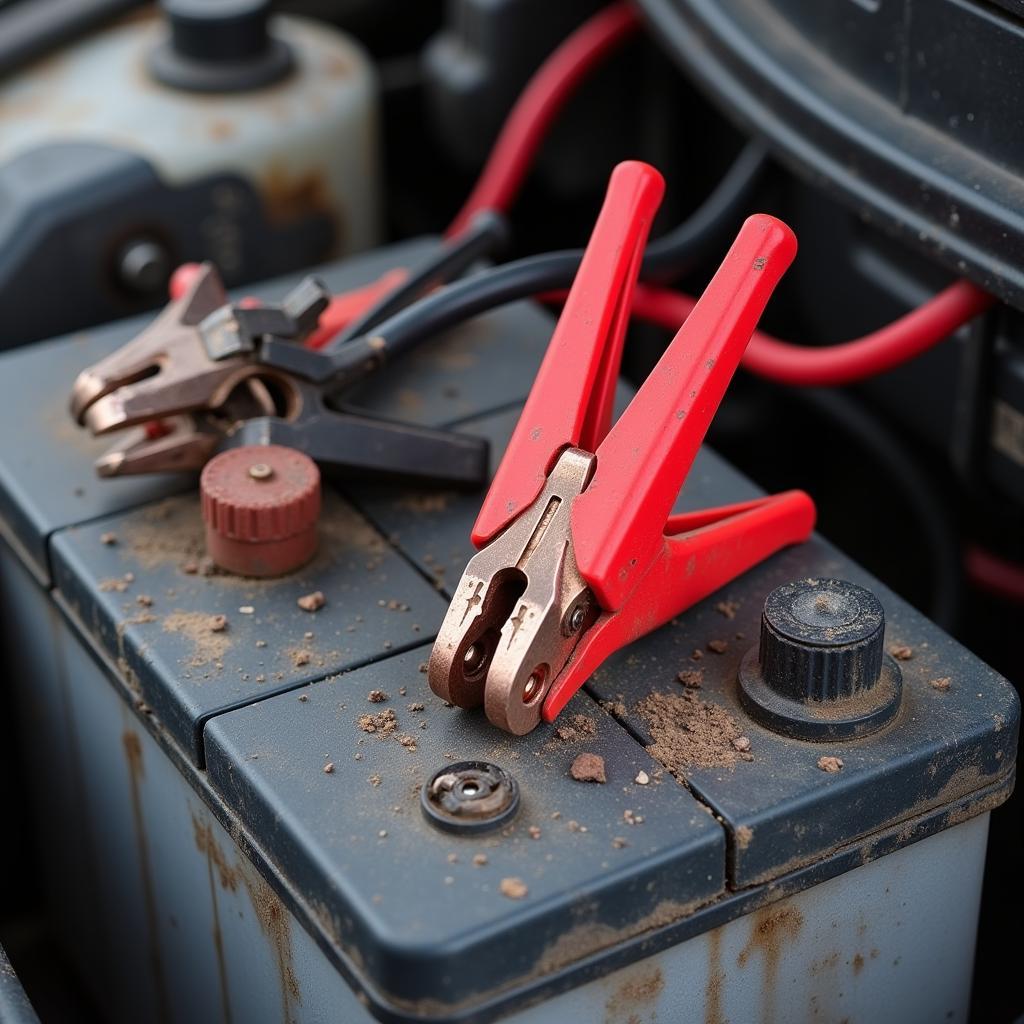If your brake warning light stays on in your 1967 Firebird, it’s a signal that demands immediate attention. This persistent illumination indicates a potential issue within your braking system, ranging from a simple fix like low brake fluid to more complex problems requiring professional diagnostics. Addressing this promptly is crucial for maintaining safe and reliable stopping power in your classic muscle car.
Understanding Your Firebird’s Brake Warning Light
The brake warning light in a 1967 Firebird serves as your first line of defense against brake failure. It’s designed to alert you to several potential issues, including low brake fluid, a malfunctioning parking brake, or problems within the hydraulic system. Ignoring this warning can lead to decreased braking performance, potentially resulting in dangerous driving conditions.
Common Causes of a Persistent Brake Warning Light
Several factors can contribute to a brake warning light that refuses to go off. One of the most common culprits is low brake fluid. Over time, brake pads wear down, requiring the system to displace more fluid to maintain pressure. If the fluid level drops too low, the warning light illuminates. A faulty brake light switch can also trigger the light, even if the braking system itself is functioning correctly. Additionally, issues within the hydraulic system, such as a leak or a malfunctioning proportioning valve, can cause the light to remain on.
Troubleshooting Your 1967 Firebird’s Brake Warning Light
Begin your troubleshooting by checking the brake fluid level. Locate the master cylinder, typically found under the hood on the driver’s side. Carefully remove the cap and inspect the fluid level. If it’s low, top it off with the correct type of brake fluid specified for your Firebird. Remember, adding fluid doesn’t fix the underlying issue, so further investigation is still necessary. Next, check the parking brake. Ensure it is fully disengaged. Sometimes, a slightly engaged parking brake can trigger the warning light.
If the fluid level is adequate and the parking brake is off, the next step is to inspect the brake light switch. This switch is typically located near the brake pedal assembly. A multimeter can be used to test its functionality. If the switch is faulty, it will need to be replaced.
Advanced Diagnostics and Remote Software Solutions
For more complex brake warning light issues, advanced diagnostics may be necessary. This involves using specialized equipment to pinpoint the root cause of the problem. Remote software solutions can be a valuable tool in this process. By connecting to the vehicle’s onboard diagnostic system, technicians can access real-time data and perform remote programming or software updates to address underlying issues.
“Remote diagnostics and software updates are revolutionizing the way we service classic cars like the 1967 Firebird,” says John Smith, Lead Automotive Diagnostic Technician at Classic Car Diagnostics Inc. “We can now address complex issues remotely, saving owners time and money.”
When to Seek Professional Help
While some brake warning light issues can be resolved with basic troubleshooting, others require the expertise of a qualified mechanic. If you’re unsure about performing any of the diagnostic steps outlined above, or if the problem persists after initial troubleshooting, it’s best to seek professional help.
Conclusion
A brake warning light that stays on in your 1967 Firebird should never be ignored. Addressing the issue promptly can ensure your safety and prevent further damage to your braking system. By following the troubleshooting steps outlined above or seeking professional help, you can keep your Firebird’s brakes in top condition and enjoy peace of mind on the road.
“Regular brake system maintenance is essential for any vehicle, especially a classic like the 1967 Firebird. Don’t wait for a warning light to tell you there’s a problem,” advises Maria Garcia, Senior Automotive Engineer at Classic Car Restoration Specialists.

